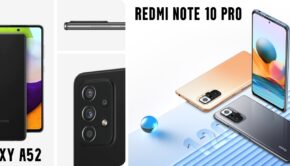Android and Its Joy Ride with Nexus

Google shook the market this Halloween by announcing a slew of Nexus devices this year along with a refresh of the last Nexus. Devices with flagship specs to be specific (no pun intended). We now have Nexus in three sizes and Google has named them appropriately as the Nexus 4, Nexus 7 and Nexus 10. And that too at a price that is hard not to mention. I will come to the price later, but first, for a quick review of specs, here they are.
Google Nexus 4
Manufactured by LG (Named LG E960)
- Qualcomm S4 pro 1.5 GHz with Adreno 320 GPU
- 2 GB RAM
- 4.7” True HD IPS Plus, 768 x 1280 (318ppi) with Corning Gorilla Glass 2
- 8MP camera with photosphere and 1080p video
- Wireless Charging
- 133.9mm x 68.7mm x 9.1 mm
- Flash storage: 8 or 16 GB
- Dual-band a/b/g/n Wi-Fi with DLNA and hotspot
- Bluetooth 4.0 and optional NFC
- Secondary 1.3MP camera
Google Nexus 7
Manufactured by Asus
- nVidia Tegra 3 (Kai) 1.3GHz with ULP GeForce GPU
- 1 GB RAM
- 7” LED-backlit IPS LCD 800 x 1280 (216ppi) with Corning Gorilla Glass
- Flash Storage: 16 GB or 32GB
- 1.3 MP 720p Front facing camera (No rear Camera)
- Optional 3G version is also available
Google Nexus 10
Manufactured By Samsung
- Exynos 5250 (dual core A15) 1.7 GHz with Mali T604 GPU
- 2 GB RAM
- 10.1” Super PLS TFT 2560 x 1600 display (299ppi) with Corning Gorilla Glass
- Flash Storage: 16GB or 32GB
- Dual-band a/b/g/n Wi-Fi with DLNA and hotspot
- 9000mAH battery
- 5MP Rear Camera (1080p 30fps video) and 1.3 MP front camera (720p)
- Bluetooth 3.0 and NFC
Most of you already know that a Nexus device has an added benefit over devices from other OEMs, and that benefit is Google itself. Nexus gets the ROM directly from Google, and because of that, the process is quite fast too. The previous Nexus, Samsung Galaxy Nexus, is expected to get the 4.2 Jelly Bean update in November itself! Furthermore Nexus is free from bloatware you are likely to find in other devices, which also means no TouchWiz or Sense, just pure Google experience.
Now from the specs comparison, we see that the nexus devices are already flagships. And the Nexus 4 can easily beat the likes of Samsung Galaxy S III or HTC One X. But what about the price of these overly desirable Nexus devices?
Device | 16GB | 32GB |
Nexus 4 | $349 | – |
Nexus 7 | $199 | $249 |
Nexus 10 | $399 | $499 |
Nexus 4 is also available in 8GB version for $299. And the newly announced 3G version of Nexus 7 (32GB) also costs $299..
But let’s compare the specs and prices for some non-Nexus device and its price with Nexus devices. Let’s take the Nexus 4 as our base..
Device | LG Optimus | Nexus 4 16GB |
Display | 4.7” True HD-IPS, 768 x 1280 | 4.7” True HD-IPS, 768 x 1280 |
RAM | 2 GB | 2 GB |
Processor and GPU | Qualcomm S4 pro 1.5GHz with Adreno 320 GPU | Qualcomm S4 pro 1.5GHz with Adreno 320 GPU |
Camera | 8MP (13MP in some markets) | 8MP |
Dimensions and weight | 131.9 x 68.9 x 8.5 mm, 145g | 133.9 x 68.7 x 9.1 mm, 139g |
Battery | 2100mAH Li-Ion | 2100mAH Li-Ion |
Misc. | – | Wireless charging |
Price | Approximately $800 (unofficial) | $349 |
Here we can clearly see that the Nexus 4 is almost the same phone as Optimus G but at less than half the price. Even if we take the Samsung Galaxy S3 into comparison (which is somewhat stupid), it costs $550 for the 16GB version. Previous Nexus devices like the Nexus One or the Nexus S were quite premium and expensive. Am I the only one who smells something fishy is going on? How can a phone, which is far superior to the other, cost less? Is Google giving us cheap (cheap, not inexpensive) hardware? Is there something major in other phones that is not present in this phone (don’t scream microSD just yet). The answer to this question is not digital (i.e., not a 1 or 0) but is quite mixed up. Let me explain why Google’s Nexus devices are cheaper.
A hint to you is that it is beneficial to both us consumers and to Google. And this is not a paradox, just clever economics.
First.
Yes, Google IS saving money in hardware. Take the example of microSD. Google already gave us reasons as to why they don’t include microSD in Nexus devices. According to them, apps on microSD don’t perform as great as apps on the inbuilt NAND Flash. They also added that consumers get confused as they don’t know where the camera snaps or the music just transferred to goes, the external storage or the NAND flash. While these reasons look fair enough up to some extent, but almost every brand gives a microSD option and their phones perform just as well. Also, as consumers, cheap storage is what we want. Then why doesn’t Google give us an option to expand storage? Well, one of the reasons for this is because it costs money. How? MicroSD cards are generally formatted in exFAT file system and Microsoft holds the rights for distribution of licenses for exFAT.
Another instance where Google saved money is the Nexus 7. Nexus 7 may be a quadcore beast with a gig of RAM, but the dark side is that it misses on rear camera. While this may not be an issue to some but there is one more fact about the Nexus 7 that it has a mediocre display. Resolution might be okay but the display suffers burnouts and ghosting upon extensive use. But it is still the best tablet at that price point which was Google’s original motive.
Second.
Google is not about hardware business. Google is more about software. And because of that Google created the Android Open Source Project (AOSP). And what is AOSP without developers? Hence the second clue to our puzzle is developers. Google makes phones and tabs cheap for developers so they can get their hands on Nexus devices easily and make custom ROMs and newer and more efficient kernels that would eventually promote Android. That explains exactly why Google gave us impractical Nexus like those with 8GB Flash. Impractical because the OS itself takes up about 2-2.5GB and all that remains is 5GB, which is not very useful for a general user but is enough for a developer to play with the dalvik cache and other mounts.
Third.
Remember when I said clever economics? This is the part where I explain my statement.
Last year Amazon introduced the Kindle fire at just $199 that had flagship specs too. A few months later, Barnes and Noble introduced their tablet with similar specs and pricing. All these were sold for little or no profit and in some cases, at a loss. Why?
This is because it was an attempt to lure people to buy their products (digital products like eBooks, newspapers, magazines, apps etc). This experiment in the market turned out to be a success. Soon they were able to draw as much profit from digital media as they would’ve made my selling overpriced tablets.
Google is doing similarly here. And since Google’s platform already had a big name (NEXUS) they used this to capture the market. The apps that the developers make get only 70% of the price listed in Play Store. The rest goes to Google. The equation is quite clean.
More Nexus = More Android = More Devs = More Apps = More Profit = Better Android Ecosystem
The system doesn’t only apply to apps, but to every digital service Google sells: Music, Storage, eBooks, Magazines, adverts..
Thus, the system is self-sustaining and symbiotic. Hence my nomenclature: Clever Economics
But up to what point is this system sustainable?
This is a valid question. Why? Suppose Google’s next device costs just $99 having similar specs. Any consumer would instantly scream “SHUT UP AND TAKE MY MONEY”, as would I too. But the truth is that this step would be counter-productive. It would completely remove competition from the market. Because manufacturers like Samsung, LG, HTC would then be at a loss. Their gadgets would not sell and they will have to turn away from Android and take up Windows Phone 8 or other OSs to make sales. The only Android devices in the market would be Huawei, Xiaomi and the likes. There is a very thin line that Google should not cross and they are already dangerously close to it.















